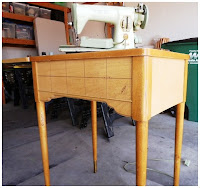 Once: Scraps of perfectly good wood rescued from the burn pile at a local big box hardware store.
Once: Scraps of perfectly good wood rescued from the burn pile at a local big box hardware store. Now: Beautiful raised garden beds filled with herbs and veggies.
No. That's what I heard when I asked the teenager working at the big box hardward store if I could purchase a stack of wood boards I'd pulled from a large wood bin in the lumber yard. He said his supervisor told him "Since this wood was from the burn pile, we don't sell it. Tell her she can go inside and buy new 2 x 4 boards." Well of course, that sounded CRAZY to me. Why turn away someone willing to pay for perfectly good wood scraps destined to be burned? More importantly, why were they burning them versus recycling them? (That's another subject for another day.)
Luckily, the kid agreed with me. He said under his breath, "Go ask the building materials supervisor. He may have a different answer." With a little perserverance on my part and thankfully, some common sense on the part of the building materials guy, I was able to buy all the boards I needed to make this new raised garden box for $18.
I can't take credit for this idea. My good friend Don made us the first one. We've enjoyed planting an herb garden in it for years now. This year though, I wanted to expand my gardening skills beyond planting a few herbs and a single tomato plant in a pot. I knew I could make a new box all by myself.
Here's how I did it:
 Materials you'll need.
Materials you'll need.- 1 x 6 pretreated lumber scraps (ideally from your local big box store's scrap wood bin.)
- 4 x 4 boards for the corner pieces
- Deck Screws
- Metal Drywall Corner Bead
- Black metal spray paint
- Deck Stain
Determine the dimensions of the box you want to make. That will dictate the length of boards to cut.
Cut all boards and metal corner bead to the desired lengths.
My box is 50" x 30" x 18"
6 1"x 6" boards cut 50"
6 1"x 6" boards cut 30"
4 x 4 boards cut 18"
Metal Drywall Corner bead
To assemble the box, I attached the 1" x 6" boards to the 2" x 2" corner pieces.
 I like the look of old boxes with metal corners. To recreate that look, I sprayed the metal drywall corner bead with black spray paint. Once the box was assembled, I attached the corner bead to the corners of the box.
I like the look of old boxes with metal corners. To recreate that look, I sprayed the metal drywall corner bead with black spray paint. Once the box was assembled, I attached the corner bead to the corners of the box. 
Next, I wanted something for vines and tall tomato plants up to tie up to, so I removed the glass panes from an old window frame, stapled chicken wire to the frame, and attached it to the back of the box.

I stained the box. I didn't like my first stain choice. Plus, it was different than the box I already had. So, I restained both boxes, and added metal corner bead to the box I already had so they would match.
My box doesn't have a bottom. Doesn't need one. I placed it next to my fence directly over the dirt.
Before adding the soil, I lined the sides of my box with biodegradeable landscaping cloth to make sure no soil came through the cracks when I watered. I added soil to the box. Here's a great article on how to calculate soil for your bed.
I added the plants. Tomatoes, Arugula, Cucumber, Peppers, and Asparagus Beans. My herb bed has Cilantro, Basil, Rosemary, Orange Mint, Chives, Dill, Parsley (Curly and Flat leaf). I'm getting a lot out of a little space. So far, it's all coming along nicely. I'll let you know how it goes.























